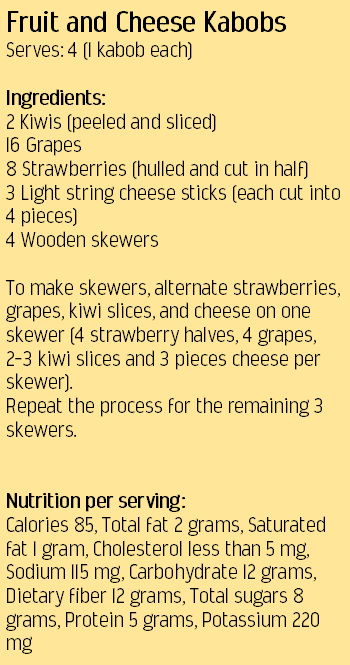|
|
June is National Dairy Month, which means it’s time to spread awareness about the health benefits of dairy! Milk and yogurt are commonly touted for their health benefits, but did you know that cheese is also an important part of the dairy group?
I often hear people say they are trying to avoid dairy, especially cheese, because they feel it is bad for them. But cheese is a great source of calcium, fat and protein (8 grams per serving). It also contains high amounts of vitamins A and B-12, along with zinc, phosphorus, and riboflavin. It does contain saturated fat which if too much is eaten can contributed to heart disease so eat in moderation. There are also low-fat versions of cheese just like there is for milk and yogurt. Look for either “reduced fat” or “made with 2% milk” or “part skim” varieties. Cheese also fits into almost any eating plan such as the Dietary Approaches to Stop Hypertension (DASH) diet, and diabetic, gluten-free and low-lactose diets. Cheese can actually help families increase their intake of fruits and vegetable. Produce pairs very well with cheese in recipes. Because of the protein and fat content it can help to curb hunger and keep you satisfied longer. Try an apple or pear with a few cubes of cheese for a healthy snack. Additionally, cheese can put you on track to meet the recommendation for three daily servings of dairy. What is a serving of cheese? A serving is 1.5 ounces of natural cheese or two ounces of processed cheese. A visual reminder of a serving of cheese is four cubes – the size of playing dice. These yummy kabobs make a great snack for kids and adults! Comments are closed.
|
Categories
All
Archives
July 2024
|
Grain Valley NewsGrain Valley News is a free community news source published weekly online. |
Contact Us |



 RSS Feed
RSS Feed
